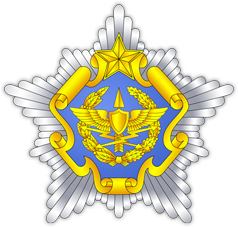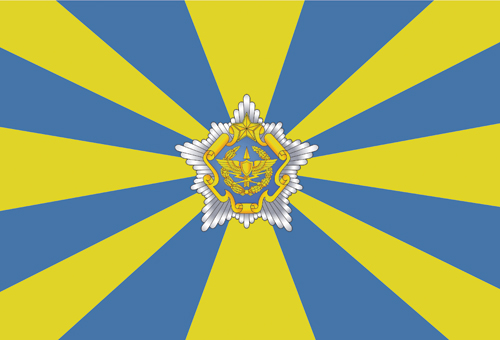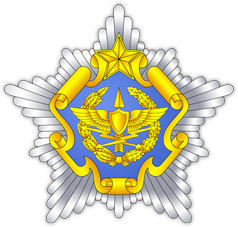- News
-
Armed Forces
- President of Belarus
- Leaders
- Mission
- Organisation
- Air Force and Air Defence
- Army
- Special Operations Forces
- Special Troops
- Military Science
- Organisation
- Education
 Air Force and Air Defence
Air Force and Air Defence

History


The Air Force and Air Defence (AFAD) was established as a new service of the Belarusian Armed Forces in 2001 and became a successor of the history and glorious traditions both of the Air Force and the Air Defence Force.
The history of the Belarusian Air Defence Force goes back to 1941, when the 5th Air Defence Division was set up in Kuibyshev (now Samara, Russia) from units of the Moscow Air Defence Corps. Following a number of reorganisations, 30 June 1960 saw the establishment of the 2nd Independent Air Defence Army, which comprised the 27th Rizhsky and 11th Baranovichsky Air Defence Corps. The army was among the first equipped with the S-300 and S-200 strategic surface-to-air missile systems, as well as the Su-15 and MiG-25 interceptors.
In 1974, the 2nd Independent Air Defence Army was decorated with a major Soviet order, the Red Banner.
The Air Force of the Republic of Belarus was founded in 1992 from the 26th Air Army. The army’s combat record is closely connected with the history of the Soviet Western Front Air Force and the 1st Air Army (since May 1942). In 1949, it was renamed the 26th Air Army.
During World War II, the army’s formations participated in the Oryol and Smolensk operations, liberation of Belarus, the Baltic republics and Poland and fought in the Battle of Berlin.
In the course of the war, pilots of the Western Front and the 1st Air Army carried out 300,000 combat flights, destroying over 5,000 enemy aircraft, more than 3,000 tanks, 3,000 artillery systems and almost 30,000 vehicles.
As many as 56 pilots of this Belarusian army delivered ram attacks against enemy warplanes. Over 160 of its service members became Heroes of the Soviet Union, 18 pilots received this honorary title twice, 46 persons became full cavaliers of the Order of Glory and 18,000 personnel were decorated with various orders and medals.
Two formations and five independent regiments were awarded guards status for excellence and valour demonstrated in combat missions. 44 units were given honorary designations: Moskovskaya, Smolenskaya, Vitebskaya, Minskaya, Grodnenskaya, Konigsbergskaya and others. Eight air corps, 24 air divisions and 59 air regiments were named after 19 Belarusian towns, marking their participation in liberating Belarus.
After WWII, the army remained on duty. Military aviators accomplished their missions in Afghanistan, Korea, Vietnam, Egypt, Angola, Syria, Yemen, Ethiopia, Cuba, Laos and Cambodia.
Over 400 members of the Air Force were involved in emergency response to the Chernobyl disaster.
The Belarusian people will always remember the heroic deed of pilot Lt. Col. Vladimir Karvat, who served in the 61st Fighter Airbase. On 23 May 1996, he sacrificed his life to steer away a falling airplane from a populated area near Baranovichi. For courage and heroism while performing military duty Karvat was honoured the Hero of Belarus (posthumous) and became the first person who was awarded this title by the Belarusian President.
The new armed service appeared as a result of merger of the Air Force and the Air Defence Force. The decision was made after profound theoretical research of modern warfare techniques. The united staff of the two services was first tested in the field at the Nyoman 2001 exercise.
Lt. Gen. Oleg Paferov was appointed the first commander of the Belarusian Air Force and Air Defence as a single armed service.
On 21 December 2001, AFAD assumed a new organisation. The year 2012 saw the actual establishment of the new armed service when multiple problems were to be settled for the first time. This required additional responsibility and hard work of its personnel.
Realising the importance of operational command and control over the troops, in 2002 the Defence Ministry set up two AFAD commands, the Western Operational-Tactical Command (WOTC) and the North-Western Operational-Tactical Command (NWOTC). The commands operated in multiple exercises, raising interoperability and C2 efficiency.
AFAD is presently developing as the Armed Forces’ most important armed service, which primary mission is gaining and retaining air supremacy when countering any military threat against Belarus. Defence of the airspace is presently a critical state task and air defences together with retaliatory forces have become the decisive deterrence factor.
Belarus is developing advanced C4ISR systems and fielding them to AFAD. The systems contribute to the efficiency of command and control over the troops. C4ISR prototypes integrating air direction centres and AFAD’s Central Command Post were first tested during the Clear Sky 2003 exercise. In August 2004, the new automated control systems were employed at operational-tactical manoeuvres, which included field firing at Russia’s Ashuluk range.
Another priority line is improvement of military hardware in the inventory of AFAD. The engineers seek to enhance the systems’ performance, jamming immunity, operational capabilities and automation, apply up-to-date elements and raise the capabilities of simulators.
Today, the Belarusian Air Force and Air Defence employs well-trained professionals, has cutting-edge weapon systems and is capable to meet its challenges. The descendants of those who attained the great victory in WWII serve in AFAD now. They determine the face and the future of modern Belarus and its army.






